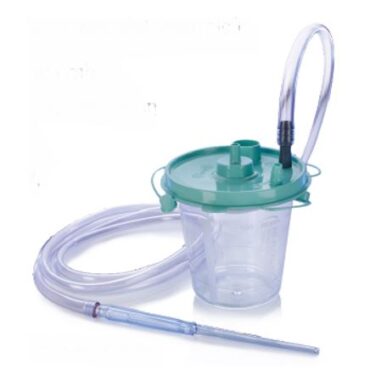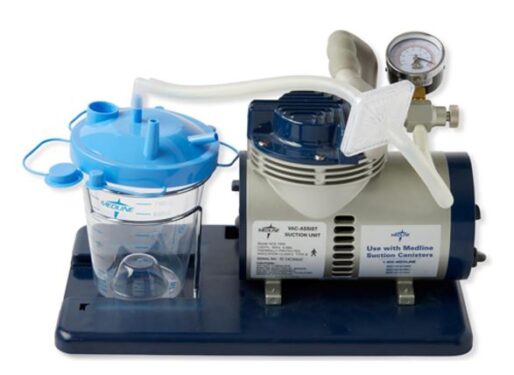For conducting a medical procedure with utmost accuracy, it is compulsory to view the surgical site clearly. Blood, mucus, sputum, debris, vomiting, or other body fluids can block this view and further complicate the conduction of medical procedures due to the inability of the physician to clearly inspect the area under focus. To resolve this issue, the use of such instruments is necessary which helps in taking blood or other exudates out of the surgical site while the operation is underway. One of these instruments is the suction connecting tube.
A suction connecting tube is a clear, latex-free, non-conductive tubing prepared by polyvinyl chloride (PVC) which is employed to clean unwanted fluids e.g. blood, irrigation fluid, mucus, vomiting, saliva, etc. from the body before or during surgery. They come in different types and varying sizes thus providing an option for the physician to choose the most suitable tube according to the surgical procedure which is to be conducted.

Working of a suction connecting tube
The suction connecting tube is connected between a suction catheter and a suction canister. This way, the fluid taken out from the catheter is transferred to the canister via the suction connecting tube.

A suction connecting tube attached with a suction instrument and a canister
These can be operated mechanically as well as electrically. In the case of an electrical setup, an ultra-quiet motor is attached to the suction set up which operates at only 58 decibels operation noise level. The suction force can be adjusted according to the need ranging from low suction to medium, high, and full suction levels. Once the suction is turned on, the suction tube pulls the fluid out of the body which is then collected into the suction canister.

A suction connecting tube attached to a canister and the electric motor
Properties of suction connecting tubes
The suction connecting tubes have the following characteristic features:
- Latex-free
- Single-use
- High collapse resistance
- Disposable as well as reusable options are available
- Clear in appearance
- Light-weight
- Soft and pliable
- Prepared by polyvinyl chloride (PVC) as well as stainless steel
- Stainless steel tubes can be sterilized multiple times
- Available in both sterile and non-sterile options
- Available in different sizes i.e. 6, 10, and 12 feet lengths
Types of suction connecting tubes
The suction connecting tubes frequently applied in surgical procedures can be of the following types:
- Adson suction tubes: This type of suction tube is particularly useful in ENT surgeries along with general as well as neurosurgeries. They are made up of stainless steel and can be reused after sterilization.
- Andrews Pynchon suction tubes: Andrews Pynchon suction tubes come with a tapered end and a slightly curved suction tube. It comes in both removable as well as non-removable types. Due to their unique design, Andrews Pynchon tubes can reach deeper into the tissues to perform their action.
- Baron suction tubes: Baron suction tubes are particularly designed to draw fluids from the ear canal or the nasal cavity. These can remove blood, debris, fluids, or foreign objects from the area. A small hole at the tip of the thumb plate is responsible for controlling the suction.
- Ferguson-Frazier suction tubes: Ferguson-Frazier suction tubes can reach the deeper parts of the body to clear unwanted fluids and debris. They are prepared from stainless steel and are reusable upon sterilization. They are the prominent type of suction tubes when it comes to micro-detail suction.
- Poole suction tubes: Named after the developer Eugene Poole, Poole suction tubes are employed to pool out blood, other body fluids, and debris during surgeries. They are best employed during cesareans and deep abdominal surgeries. These tubes are reusable after sterilization.
- Yankauer suction tubes: Yankauer suction tubes are instruments intended to be used for oral procedures. These were developed by Sidney Yankauer, an American otolaryngologist. These can arguably be the most commonly used suction tubes of all time. They can be used to clean blood, mucus, sputum, or vomiting from the airway passage.
Applications of suction connecting tubes
A suction connecting tube can be employed for the following purposes:
- These can be employed for the cleaning of debris at the surgical site.
- The suction connecting tubes can clear out blood from an area being operated.
- These can also be used to clear out saliva, mucus, sputum, or vomiting from the airway passage during a respiratory tract procedure.
- The suction connecting tubes can also be employed to take the blood out of the skull in case of an intracranial hemorrhage.
Side effects of suction connecting tubes
The following side effects can be caused by the use of suction connecting tubes:
- Prolonged suctioning can result in a decrease in the patient’s heart rate i.e. bradycardia.
- Hypoxia i.e. lower levels of oxygen in the body tissue can also occur due to the interrupted supply of oxygen into the body.
- These tubes can cause physical injury to the area where they are attached.
- Mucosal trauma followed by bleeding is also commonly seen with their use.
Conclusion
The suction connecting tubes are the medical devices intended to be placed into the surgical areas to clear the fluids such as blood, vomiting, saliva, or other exudates out of the body. This provides a clear view of the target site to the physician thus easing the medical procedure being conducted. Their different types provide an option to choose a suction tube that is most suitable for the procedure to be conducted. Thus their easy use with great benefits has rendered them one of the most needed items in a hospital setup.

PhD Scholar (Pharmaceutics), MPhil (Pharmaceutics), Pharm D, B. Sc.
Uzma Zafar is a dedicated and highly motivated pharmaceutical professional currently pursuing her PhD in Pharmaceutics at the Punjab University College of Pharmacy, University of the Punjab. With a comprehensive academic and research background, Uzma has consistently excelled in her studies, securing first division throughout her educational journey.
Uzma’s passion for the pharmaceutical field is evident from her active engagement during her Doctor of Pharmacy (Pharm.D) program, where she not only mastered industrial techniques and clinical case studies but also delved into marketing strategies and management skills.
Throughout her career, Uzma has actively contributed to the pharmaceutical sciences, with specific research on suspension formulation and Hepatitis C risk factors and side effects. Additionally, Uzma has lent her expertise to review and fact-check articles for the Health Supply 770 blog, ensuring the accuracy and reliability of the information presented.
As she continues her PhD, expected to complete in 2025, Uzma is eager to contribute further to the field by combining her deep knowledge of pharmaceutics with real-world applications to meet global professional standards and challenges.








